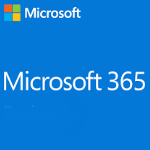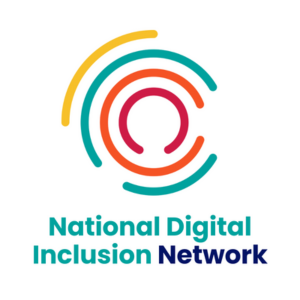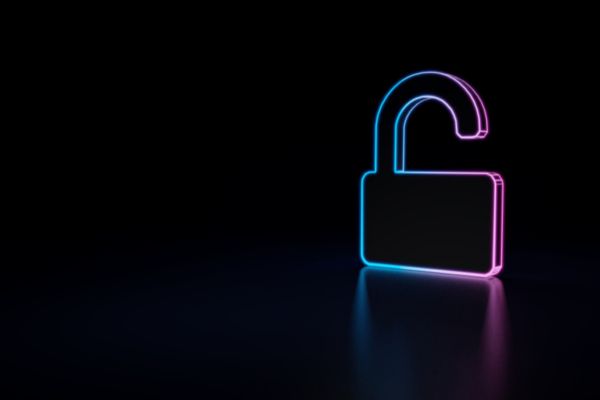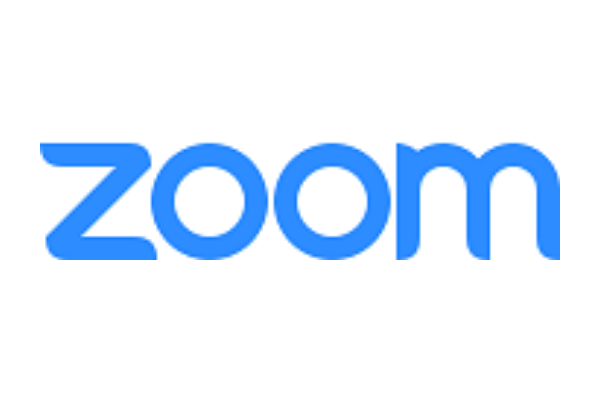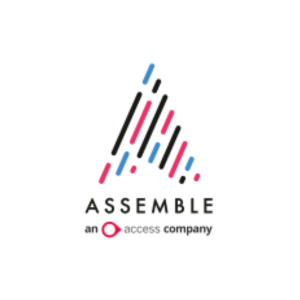Insights
INSIGHTS
All Topics
The complete guide to accessibility software
From screen readers to relaxation and sensory support software to web accessibility checkers, we explore the software that can help remove barriers for people with disabilities
Accessibility is essential for all organisations. Whether it’s creating an accessible workplace or ensuring your services are can be used by those who need them, it is important to take responsibility and strive towards removing barriers.
The charity Scope explains the social model of disability: “People are disabled by barriers in society, not by their impairment or difference. Barriers can be physical, like buildings not having accessible toilets. Or they can be caused by people’s attitudes to difference, like assuming disabled people can’t do certain things.”
People with disabilities have the same tasks and goals as everyone else, and using digital is a key part of this, with the digital world now central to many people’s daily lives, from meeting basic needs to connecting with others and achieving self-empowerment.
So, in this article, we explore a variety of technologies that have been developed to help remove barriers for people with disabilities. Read on to find out how tech can better serve you or the people involved in your charity’s work and services.
What is accessibility software?
Accessibility software is a form of assistive technology: a tool that maintains or improves a person’s functioning and independence, thereby promoting their wellbeing.
As connecting online has become more and more essential for everyday functions, digital assistive technology has also been developed to overcome the disabling aspects of our online and offline worlds. They can benefit everyone, not just people with disabilities.
This article also includes accessibility software that can be used by people who don’t have disabilities to help create a more accessible environment for others.
What is considered the “best” accessibility software will depend on each person’s needs and preferences. So below, we outline the different types of accessibility software on offer to help everyone take the next steps.
Accessibility software you already have access to
Sometimes the best tools are those that are the quickest, easiest, and least expensive to embrace. So, if you have existing devices, start by checking whether these have suitable accessibility features.
A great place to start is AbilityNet’s ‘My Computer My Way’ database of guides, which “offer step by step instructions on how to adapt your phone, computer, or tablet to meet your needs”. You can search for a specific need, filter the guides based on symptoms or condition, and filter by your device’s existing operating system.
Microsoft have their own guides on how to make their products accessible for people with vision impairments, hearing impairments, neurodiversity, mobility issues, learning disabilities, and mental health conditions.
Apple products also have a range of accessibility features, such as a visual magnifier, sound recognition, the Live Listen feature, and audio descriptions, which come free with their devices. You can also check out Android’s accessibility features here.
Exploring whether your existing tech has the necessary accessibility features can save time and money, while ensuring that they work with the digital tools you already use.
Audio software
Audio accessibility software is a type of programme that helps users who have hearing impairments. This can include sound amplifiers, noise cancellation software, transcription tools, captions, sign language interpreting, and alerting devices.
Sound amplifiers are also called assistive listening devices (A.L.Ds). These bring sound directly into the ear, separating important sounds like speech from background noise. Google’s Sound Amplifier app has options to reduce unwanted sounds, boost quiet sounds, boost different frequencies, and adjust ears separately. Apple’s Live Listen feature also amplifies sound to your headphones if you put your device close to the person speaking.
Noise cancellation software is used to make background noise quieter. One example is Krisp.
Transcription software transcribes the spoken word into written text. Google’s Live Transcribe transcribes everyday, conversational speech in real-time through an Android device’s microphone. Microsoft Translator can also be used for transcription.
Relay U.K. is an app which transcribes phone conversations, and can be downloaded from the App Store, Google Play, or the Microsoft Store for use on a smartphone, tablet, or computer. Otter.ai also has real-time transcription and connects to Zoom, Microsoft Teams, or Google Meet to take and share meeting notes, while Skype provides captions for audio and video calling.
SignVideo is an alternative option for video calls where individuals or organisations can have a British Sign Language interpreter present during video calls. Signly is a tool that organisations can use to add in-vision sign language to websites for individuals who are deaf and favour sign language over written English.
To make audio and visual content accessible to people with hearing impairments, you can use captioning and transcription services such as rev.
Alerting software lets people with hearing impairments know that an audible event is taking place, like a doorbell ringing or a fire alarm sounding. One example of alerting software is Braci Sound Alert.
TapS.O.S. is an app which allows people to communicate with emergency services without needing to speak or listen. This can be useful for people with hearing impairments, those who are non-verbal or who have affected speech by a stroke or diabetic attack, or those who are unable to speak due to the circumstances of the emergency.
Vision software
Vision accessibility software is a type of programme that helps users who have visual impairments. This can include speech to text software, screen readers, text readers, and screen magnification software. Some software is also compatible with braille displays.
Speech to text software t transcribes users’ speech. Microsoft and Apple have speech to text capabilities, while Dragon Professional Individual and Dragon Anywhere provide alternative options.
Screen readers audibly read what is displayed on the screen. Examples of screen readers include Microsoft Windows’ Narrator, Apple’s VoiceOver, and the Speechify app.
Screen magnification software magnifies the screen’s visual display. ZoomText Magnifier and Dolphin Supernova Magnifier are both examples of screen magnifiers that work on Windows systems. Devices with Windows 10 and 11 also have magnification features built in.
Apple enables users to magnify their screens or an area of the screen. Screen magnification apps that work with Apple products also include ZoomTextMac and MagniLink Viewer.
iPhone users can magnify objects around them using the Magnifier app, while Microsoft’s Seeing AI app provides information on who and what is around the user, as well as reading text aloud and identifying currency.
Be My Eyes is a free mobile app which connects blind and low-vision individuals with sighted individuals through a live video call, where they can gain assistance solving everyday tasks.
Voice assistants such as Siri, Cortana, Google Assistant, and Alexa can also be useful for people with visual impairments as an alternative way to access information to using devices with screens.
Spoken communication software
Communication software supports users to communicate out loud with others. While many of the audio and visual software outlined above may help users with communication, other tools that can be useful include predictive text and augmentative and alternative communication (A.A.C.) devices, which synthesise speech from symbols and/or text.
Grid is an iPad app where symbols and text selected by the user is synthesised into audible speech. Mind Express uses Windows 10 in the same way.
Go Talk Now and Talking Mats use only symbols to create audible speech, while Clarocom uses only text to create audible speech. Predictable uses predictive text, symbols, and text to create audible speech.
With Apple’s Live Speech feature, users can type what they want to say and have their device speak it out loud. The company’s Personal Voice feature allows people who are at risk of losing their voice to generate a voice that sounds like them. Users can type what they want to say and have their device speak it out loud in their personal voice.
Mobility software
Software can make using devices easier for people with a variety mobility needs. Apple products include a range of such features, including Voice Control, Switch Control, Assistive Touch, Quick Actions for Apple Watch, Alternative Input, and Back Tap.
Microsoft offers voice recognition, eye control, and keyboard shortcuts.
The Google keyboard and Microsoft Swiftkey allow users to swipe across the keys to type, which is useful for people who need help using a standard keyboard or type one-handed. DOTKey also helps users type with one hand.
Reading and writing software
Reading software can be useful for people who have dyslexia. Claro provides a range of suitable apps. The Claro ScanPen app is a text to speech reader for printed text documents, letters, and test papers.
ClaroSpeak is also a text to speech app, but this option also includes editing, proofing, a speaking dictionary, colour highlighting, and word prediction.
ClaroPDF Pro can be used to annotate P.D.F. files using Adobe Reader and other commonly used P.D.F. apps. It also enables accessible text and P.D.F, files to be read back to you, and users can convert photos and images accessible to P.D.F, files.
Dolphin Easyreader offers direct access to over 40 libraries and book collections around the world for accessible reading on a range of devices for readers who are visually impaired, dyslexic, or otherwise print impaired.
Predictive text can help anyone who has trouble with writing using their devices. You can use the predictive app features on popular software such as Microsoft Word or use specific predictive text software such as Read&Write.
The Ginger writing assistant checks users’ text for grammar, style, and spelling errors. Grammarly is another grammar and writing checker.
Hemingway Editor is helpful for writers to make sure their writing is easy to read and understand for people with dyslexia. Microsoft Word also has an inbuilt Editor feature which gives writers a score, provides spelling and grammar corrections, and gives refinements for clarity, conciseness, punctuation conventions, and vocabulary.
Relaxation and sensory support software
Some software is specially designed to support people to relax and relieve sensory overload in daily life.
Microsoft devices allow users to minimise visual distractions, simplify the screen display, and block alerts and notifications.
Apple users can pause animated images and reduce sensory overload online with Safari Reader. They can also use Background Sounds such as distant rain or ocean waves to minimise distractions, increase focus, calm, and restfulness.
Relaxation apps for individuals include Bettersleep and Headspace. Software which can help with sensory overload include Miracle Modus and apps developed by the Sensory App House.
Organisation software
Organisation software can help with a range of things, such as motivation, organising a work project, making “to do” lists, or setting reminders for daily activities.
Brain in hand is a tool that both individuals and organisations can use. It helps users keep track of tasks, access solutions for unexpected and overwhelming situations, monitor moods, reflect on emotions, and communicate feelings. It also includes support from a dedicated human coach to build independence. It is designed for autistic people and other neurodivergent people.
Habitica can help users achieve their goals, build habits, and boost productivity by treating life like a game. Todoist is a task manager and to-do list app that can help individuals and teams become more organised.
Mind mapping can help people with dyslexia visually structure ideas and help with analysis and recall. Inspiration Maps helps users build diagrams, graphic organisers, and outlines. The Dyslexia Association recommends iMindMap and MindView.
Web accessibility checking software
Web accessibility checking software can help website developers check if their website meets accessibility guidelines.
The Web Accessibility Initiative stresses that it is not possible to check all accessibility aspects automatically. “Human judgement is required”, they say. “Sometimes evaluation tools can produce false or misleading results. Web accessibility evaluation tools can not determine accessibility, they can only assist in doing so.”
The professional development platform QA Lead recommends Tricentis Testim, accessiBe, and Siteimprove. You can also check out our article on where to start with web accessibility or get in touch with AbilityNet or Scope to conduct an accessibility audit of your website.
Josie Sparling
More on this topic
Recommended Products
Related Videos
Our Events
Webinar: A charity guide to Meta Quest VR
Join us on the 30th of May, where we will explain more about how VR technology works and how it can help charities, hearing from organisations where the technology has already made a difference.
We use cookies so we can provide you with the best online experience. By continuing to browse this site you are agreeing to our use of cookies. Click on the banner to find out more.





